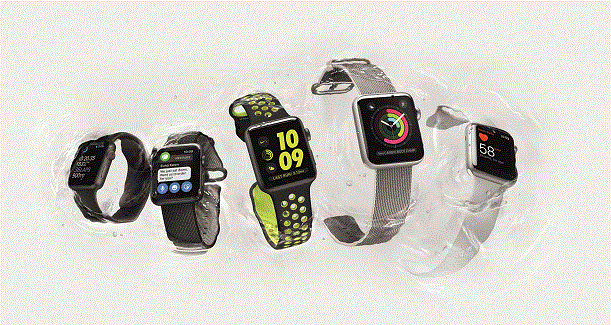Apple’s Watch struggled to make itself heard amid last week’s annual product showcase, with the wearable jockeying for position against two new iPhones, and guest appearances from Mario and Pokemon.
The device got an upgrade, with a new operating system, long awaited GPS, water resistance and a dual-core processor.
But regardless of the scale of the event, it’s fair to say wearables are still waiting for their “iPhone moment”. A category that was once seen as filling the gap left by plateauing smartphone sales and helping operators to boost ARPU is being increasingly relegated to that of an interesting niche.
George Jijiashvili, Wearables Analyst at CCS Insight, says: “What we have seen is mainstream consumers remain largely apathetic to full touch smartwatches. There’s little evidence that new and compelling use cases are there to persuade them.”
[Read more – Fitness bands to dominate wearables category, claims new research]
Ramon Llamas, Research Manager, Wearables and Mobile Phones at IDC, is equally gloomy about where the market is. “Smartwatches still have yet to prove their value to the market, and since they rely so much on smartphones for almost everything, consumers have yet to gravitate towards them en masse,” he says. “For most, since the smartwatch ends up being an extension of the smartphone, the smartphone has been sufficient for their needs.”
Despite the promises of Apple’s Tim Cook or a company like Samsung – CCS’s Jijiashvili notes how its recent Gear S3 launch was as high profile as some of its flagship handsets – the category appears to be trapped in its infancy.
Llamas says: “For all intents and purposes, these are still first generation devices, and it’s easy to see how many of them have shortcomings of one sort or another: confusing user experience, lack of applications, design problems, and not to mention high prices. With this in mind, it may make sense to wait for a few more cycles to churn through before moving on to a smartwatch.”
Battery life is seen as the main offender, with the wearable serving itself up as yet another device needing a daily boost of power. Jijiashvili says: “The key thing is there haven’t been enough reasons to keep using the device every day and deliver something that smartphones can’t. With the full touch smartwatches, battery life in particular has been a key issue.
“In addition to the phone, it’s another device that you need to charge and look after. Once the novelty wears off, you end up just going back to the smartphone.”
While Apple has yet to dip its toe in the waters of cellular connectivity for wearables, other manufacturers, notably Samsung, have jumped ahead. Llamas says it could open the door to new kinds of use case including navigation, payments and health: “That’s an important stepping stone for the smartwatch to free itself from the smartphone, and it allows the user to transfer information passively to other systems without the user having to do anything.”
Ryan Martin, Senior Analyst at ABI Research, adds: “In some ways the wearable could replace the mobile in acting as a hotspot for users. In theory it could work in a much better way than a smartphone.”
Jijiashvili is unconvinced, bringing the debate back to the battery and cellular’s strain on it. He adds he is sceptical about consumers’ appetite for another contract with an operator, which will dishearten telcos. He says: “Getting another contract and data plan for your watch is a big barrier to overcome. Tablets couldn’t do it.”
Where all three industry watchers are united is how wearables can adapt, although it won’t spell good news for operators seeing the category as a fresh source of income. Martin notes that a key barrier for smartwatches is they appeal to those who probably have a watch already on their wrist. The devices need to be noticeably better in order to break through. He says: “That’s why we are seeing a greater focus on fashion.”
Jijiashvili agrees, predicting the next wave of wearable growth will come from “smart analogue watches” built in partnership with established manufacturers. They will deliver some of the features of the techier smartwatches, but without the battery draining chips.
However, he is less excited about the future of full touch devices, despite the enthusiasm of manufacturers. He says: “It’s hard not to sound so pessimistic but when we saw the first wave of smartwatches in 2013, they came out with a few flaws. Fast forward three years later and the same issues are there – battery life is still sub-par and the features are still not quite there.”
Llamas takes a more optimistic view, arguing that a comparative lack of functionality now gives scope for device makers to innovate. He says: “In no particular order: design, cellular connectivity, battery, price, selection, applications, platforms. In short, there is no shortage of directions to go.”
The coming years will reveal if wearables truly are capable of their own iPhone moment.



